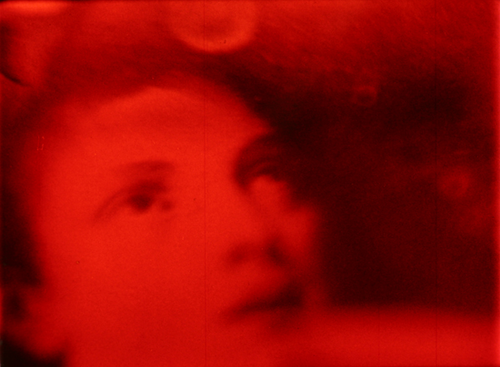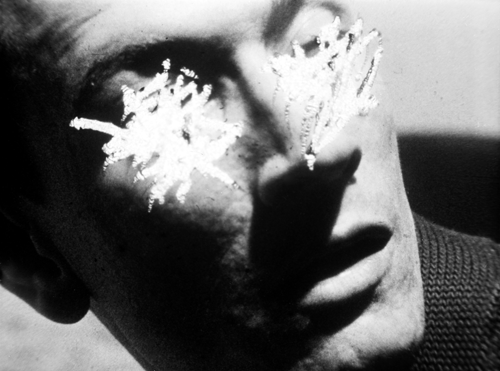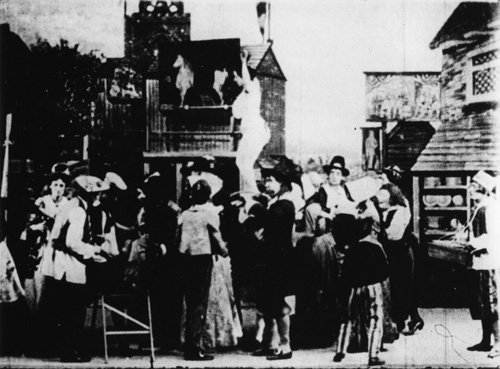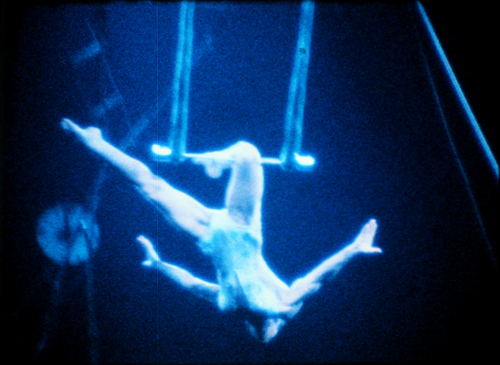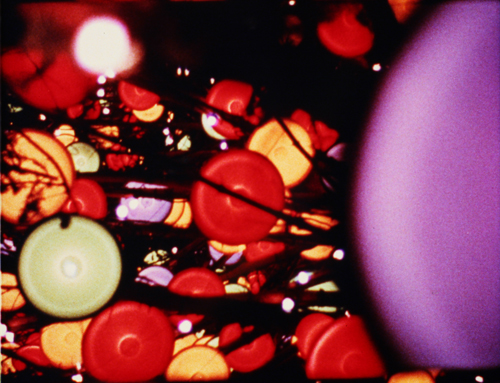Showing posts with label Carl E. Brown. Show all posts
Showing posts with label Carl E. Brown. Show all posts
1.4.12
Filmmaker Profiles
5:12 PM
---
BAILLIE, BRUCE
---
BRAKHAGE, STAN
---
BROWN, CARL E.
---
CANTERBURY, KYLE
---
DORSKY, NATHANIEL & HILER, JEROME
---
ELDER, R. BRUCE
---
GEHR, ERNIE
---
JACOBS, KEN & FLO
---
MEKAS, JONAS
Labels:
Andrew Noren,
Bruce Baillie,
Carl E. Brown,
Ernie Gehr,
Jonas Mekas,
Ken Jacobs,
Kyle Canterbury,
Marie Menken,
Michael Snow,
Nathaniel Dorsky,
Phil Solomon,
R. Bruce Elder,
Stan Brakhage
5.4.10
Brown Monet
12:50 PM
“Monet is an artist that I have always greatly admired. His use of colour through water and sky to convey his emotional state has had a great influence on me. Whether it was the first rays of light glinting the water’s edge or the magic time just before nightfall, Monet’s sense of colour and colour conveyance has always been perfect. I have used my techniques of alchemical film to translate onto film my impressions of Monet’s sense of colour, water, sky and his most powerful icon the water lily. Using my toning, liquid emulsion, reticulation, dried crystal bleach formations and stacking techniques to just name a few I have translated the Monet experience onto the surface of my film.”
-- (Carl Brown)
(Water Lilies by Claude Monet)
(Blue Monet by Carl Brown)
(Weeping Willow and Water-Lily Pond by Claude Monet)
(Blue Monet [right side] by Carl Brown)
(Blue Water Lilies by Claude Monet)
(Blue Monet by Carl Brown)
(Water Lilies by Claude Monet)
(Blue Monet [right side] by Carl Brown]
(Waves and Rocks at Pourville by Claude Monet)
(Blue Monet [right side] by Carl Brown)
(Water Lilies and Agapanthus by Claude Monet)
(Blue Monet [left side] by Carl Brown)
(Water Lilies by Claude Monet)
(Organic Lesions by Carl Brown)
Labels:
Blue Monet,
Carl E. Brown,
Claude Monet,
Water Lilies
|
1 comments
27.11.09
Alchemical Interweb
2:48 PM
The following are just a few of the many wondrous images contained on a site I recently completed for the artist Carl E. Brown, who has been very generous with me, and whose work I greatly admire...
http://www.cebrown.org
[All relevant information on Carl to be found online is included on this website, therefore I will also be using this post as my entry for him in my filmmaker "profiles"]
http://www.cebrown.org
Labels:
Carl E. Brown
|
0
comments
5.11.09
Chemical Phenomena
10:30 AM
Boy’s Best Friend (2002, Cécile Fontaine)
Twilight Psalm II: The Walking Hour (1999, Phil Solomon)
Air Cries "Empty Water" Pt. 1: Misery Loves Company (1993, Carl E. Brown)
Cracked Share (2005/6, Lee Hangjun)
The Young Prince (2007, R. Bruce Elder)
No. 5 (1998, Olivier Fouchard)
Das Goldene Tor (1992, Jurgen Reble)
Aaeon (1968-70, Al Razutis)
Water Spell (2007, Sandy Ding)
Elephants’ Test (2005, Albert Alcoz)
Removed (1999, Naomi Uman)
Light Work Mood Disorder (2007, Jennifer Reeves)
Labels:
Al Razutis,
Albert Alcoz,
Carl E. Brown,
Cecile Fontaine,
Jennifer Reeves,
Jurgen Reble,
Lee Hangjun,
Naomi Uman,
Olivier Fouchard,
Phil Solomon,
R. Bruce Elder,
Sandy Ding
|
0
comments
1.11.09
The Erotic Impulse
5:17 PM
Fuses (1965, Carolee Schneemann)
In an essay [1] on fellow Canadian artist Carl E. Brown, Bruce Elder examines parallels between such films as Man Ray’s L'étoile de mer, Stan Brakhage’s Dog Star Man Pt. 3 and Carl Brown's Air Cries “Empty Water” Trilogy (I would specifically point towards part two, The Red Thread)
that involve thematic explorations of the human “erotic impulse”, highlighting the material effects each filmmaker has applied to the surface of the film.
L'étoile de mer (1928, Man Ray)
In considering previous explanations of the union of “this complicity of desire with this sort of plasticity”, he believes that the majority of the so-called “modernist answers” have come to an incorrect and simplified conclusion that the relation shared by image and the surface events (re:effects) are negative, in that the images are rendered inscrutable and are subsequently less alluring.
Dog Star Man Pt. 3 (1964, Stan Brakhage)
He posits that the true answer is much more complex than that. The effects imposed on the surface of the film seem to be essentially without form, thereby negating concept and resisting quantitative significance, or in other words they could be characterized as nothing, which itself is a negative notion. Contrary to that is the fact that while it is true that the image can often be obscured by the events taking place on the surface, they can just as often amplify the significance or structure of the image, which would certainly be categorized as a positive relation.
Air Cries "Empty Water" Pt. 2: The Red Thread (1993, Carl E. Brown)
He goes on to further illuminate the complexity that underlies this relation, examining the positive, the resistance of the surface events, like flesh (quite literally the “skin of the film”), to be separated into individually significant parts, as well the libidinous nature of the reaction we can have to these events, and the negative, the inconsistency amongst the surface events can also be more than reality or pleasure can contain, and thus manifest themselves in the same way uncontainable desire does, with decay and eventually death.
Halcion (2007, Dietmar Brehm)
Furthermore he invokes Freud and illustrates conflicting themes such as Eros (the personification of lust/love) and Thanatos (the personification of Death), Symbolic and Imaginary, the unmoving image (stasis) and the fluctuating surface, and the potentially ecstatic tension created by their coexistence within these films.
Eros and Wonder (2003, R. Bruce Elder)
He closes with the following: “Like a moebius strip, then, the image turns into the surface event that turns back into image, as eros is transformed into thanatos and thanatos into eros. These transformations cannot be conceptualized and stated discursively, for meaning depends upon signs and signs depend upon distinctions and separations and what we have here is fusion in form of coincidentia oppositorum (the coincidence or unity of opposites).”
Christmas On Earth (1963, Barbara Rubin)
A fascinating subject I think, one that has, and if mined further can continue to, yield considerable insight into a certain mode of film that many richly creative and expressive film artists have produced.
Le Tombeau d'Aphrodite v.2 (2004, Olivier Fouchard)
[1]This essay, which in its full form is much more eloquent and enlightening than my humble and extremely simplified summary can attest to, originally appeared in Northern Exposures: Recent Canadian Experimental Film. Buffalo: CEPA Gallery, 29 Jan.-30 Apr. 1994: 3-7.[touring program Albright-Knox Gallery and George Eastman House Museum]. R. Bruce Elder was awarded the Robert Motherwell Book Award this year for his book Harmony and Dissent: Film and Avant-garde Art Movements in the Early Twentieth Century, a much deserved honor.
Transferimento di Modulazione (1969, Piero Bargellini)
(The images I’ve included were not a part of the original essay)
Labels:
Barbara Rubin,
Carl E. Brown,
Carolee Schneeman,
Dietmar Brehm,
Man Ray,
Olivier Fouchard,
Piero Bargellini,
R. Bruce Elder,
Stan Brakhage
|
1 comments
Subscribe to:
Comments (Atom)



